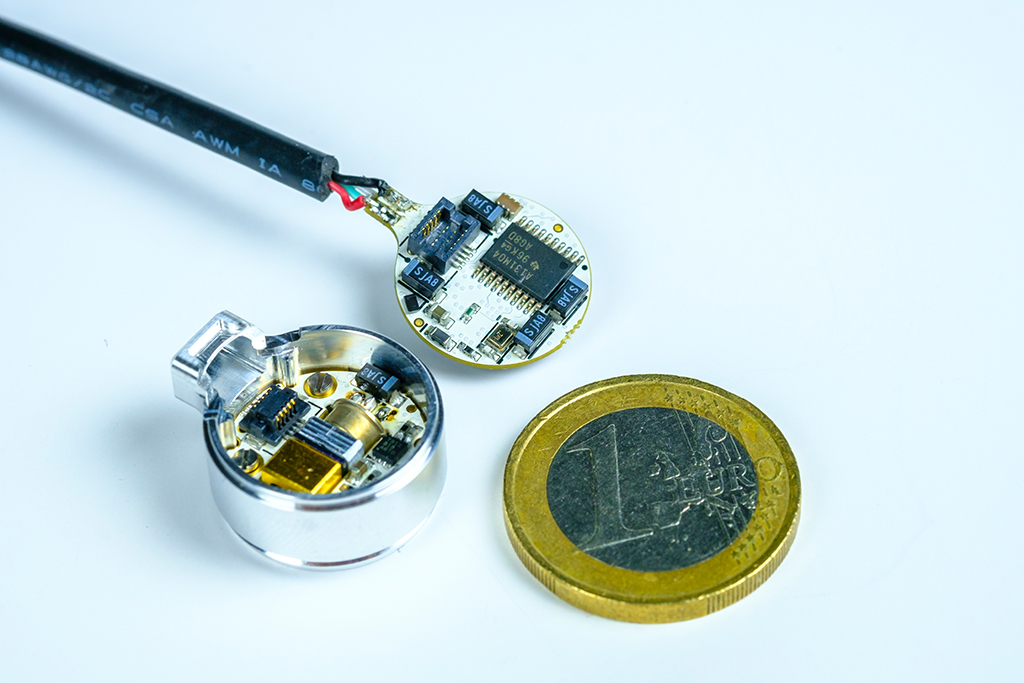Miniaturized, transcutaneous photoacoustic gas sensors

In the MINSK project, Fraunhofer IPM has developed an innovative, miniaturized CO2 sensor system. The aim was to continuously monitor the CO2 concentration (tcpCO2) in blood transcutaneously and maintenance-free over a longer period of time.
The key aspect here was the strong absorption of the electromagnetic radiation of CO2 at a wavelength of 4.3 µm. Through the photoacoustic effect, infrared active CO2 gas molecules convert light energy into pressure variations. A microsensor with an optical path of only a few millimeters was developed for the required concentration range of 5% to 25% CO2 with a resolution of 0.1%. The miniaturized photoacoustic sensor system was constructed by using a cost-effective MEMS microphone for acoustic recording, a MEMS infrared emitter and a hermetically sealed detection chamber. The interaction of the CO2 with the infrared light takes place in the detection chamber, leading to a change in chamber pressure, which is read out via the microphone. This value is directly proportional to the gas concentration.
For this system, we have developed a gas-tight, flat-lying, dome-shaped housing with a diameter of approx. 18.5 mm which is attached to the skin via an adhesive patch. A heating element stabilizes the sensor at 42 °C to ensure localized hyperemia. The increased perfusion to the tissue enables CO2 to diffuse through the skin and then through a gas-permeable membrane in the detection cell. Consequently, the TcPCO2 value comes very close to the arterial value. The developed sensor, which is now available as a prototyp, connects via a thin cable to an evaluation device which also supplies the necessary energy.
Project financing
The MINSK project was financed as part of the Fraunhofer-Gesellschaft’s in-house Fraunhofer vs. Corona program.
Project duration
May 2020 to February 2021